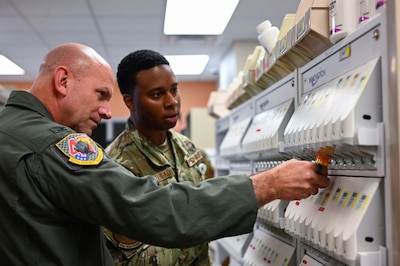alta6461649657
About alta6461649657
The Impact of Distant Work on Worker Productiveness: A Case Examine Of TechCorp
Introduction
The COVID-19 pandemic has fundamentally altered the way companies operate, with remote work turning into a norm moderately than an exception. This case research examines TechCorp, a mid-sized technology agency, to understand how the shift to distant work has affected worker productiveness, collaboration, and total job satisfaction.
Background
Founded in 2010, TechCorp specializes in software program development and IT consulting. The company, which had a workforce of 500 workers earlier than the pandemic, was primarily based mostly in a central workplace location. In March 2020, as the pandemic escalated, TechCorp shortly transitioned to a distant work mannequin to ensure the safety of its employees. This case study analyzes the modifications that occurred from March 2020 to March 2022, specializing in productiveness metrics, worker suggestions, and collaboration instruments.
Transition to Remote Work
The transition to remote work was executed in phases. Initially, TechCorp implemented remote work insurance policies that allowed staff to work at home with quick effect. In the event you liked this article in addition to you desire to get details regarding latest ed treatments generously go to our web site. The IT department provided obligatory instruments and resources, together with laptops, software program licenses, and entry to cloud-based mostly companies.
Measuring Productivity
To assess productiveness, TechCorp utilized various metrics, including challenge completion rates, hours worked, and worker efficiency opinions. Previous to the pandemic, the corporate had an average challenge completion charge of 85%. In the primary quarter of remote work, this charge dropped to 75%, elevating concerns amongst management.
However, by the second quarter, completion rates rebounded to 90%, surpassing pre-pandemic levels. This enchancment was attributed to a number of elements, together with a discount in commuting time, which allowed staff to allocate more hours to work. Moreover, the flexibility of remote work enabled workers to handle their schedules higher, resulting in increased effectivity.
Worker Suggestions
TechCorp performed bi-annual surveys to gauge employee sentiment regarding remote work. The results indicated a big shift in worker attitudes. Initially, 60% of workers expressed issues about isolation and communication limitations. Nevertheless, as time progressed, these considerations diminished. By the tip of 2021, 75% of workers reported feeling more productive working from home.
Key feedback themes included:
- Work-Life Stability: Many employees appreciated the flexibleness of distant work, allowing them to raised steadiness private and skilled duties.
- Lowered Commute Stress: Employees reported important time financial savings and lowered stress ranges with out daily commutes.
- Collaboration Instruments: The adoption of collaboration tools like Slack, Zoom, and Trello facilitated communication and mission administration, mitigating emotions of isolation.
Challenges Confronted
Regardless of the general constructive feedback, TechCorp faced several challenges in the course of the transition to distant work. Notably:
- Communication Gaps: Initially, there have been difficulties in sustaining effective communication across groups. Misunderstandings and delays in responses have been common, leading to frustration.
- Onboarding New Employees: The distant onboarding course of proved difficult for brand spanking new hires, who struggled to integrate into the company culture without in-individual interactions.
- Psychological Health Considerations: Some employees reported feelings of loneliness and burnout, highlighting the need for psychological well being sources and assist.
Methods for Enchancment
To handle the challenges, TechCorp implemented several strategies:
- Regular Check-Ins: Managers started conducting weekly one-on-one test-ins with workforce members to discuss workloads, challenges, and provide help.
- Digital Team-Building Actions: The company organized digital occasions, comparable to game nights and coffee breaks, to foster connections among staff.
- Psychological Health Assets: TechCorp expanded its Worker Assistance Program (EAP) to include virtual counseling periods and mental well being workshops.
Collaboration and Innovation
Despite preliminary challenges, distant work spurred innovation at TechCorp. The need for efficient collaboration led to the exploration of recent technologies and processes. The corporate adopted Agile methodologies, allowing teams to work in sprints and adapt quickly to altering challenge requirements.
In addition, TechCorp inspired cross-departmental collaboration through virtual brainstorming periods, leading to the development of latest software program solutions that addressed emerging market needs during the pandemic.
Long-Term Effects and Future Outlook
As of March 2022, TechCorp has embraced a hybrid work mannequin, permitting workers to choose between remote and in-workplace work. This method has resulted in increased worker satisfaction, with 80% of staff preferring the pliability of hybrid work.
Management believes that the lessons learned during the pandemic will shape the company’s future work culture. TechCorp plans to invest in know-how that helps distant collaboration and continues to prioritize employee properly-being.
Conclusion
The case of TechCorp illustrates the numerous impact of distant work on worker productiveness and engagement. While the transition presented challenges, the company’s proactive strategies and emphasis on communication and assist led to improved outcomes. As organizations worldwide adapt to the evolving work panorama, TechCorp’s experience serves as a precious reference for navigating the complexities of remote work.
This case examine highlights the significance of flexibility, innovation, and worker nicely-being in fostering a productive and engaged workforce in a post-pandemic world.
No listing found.

